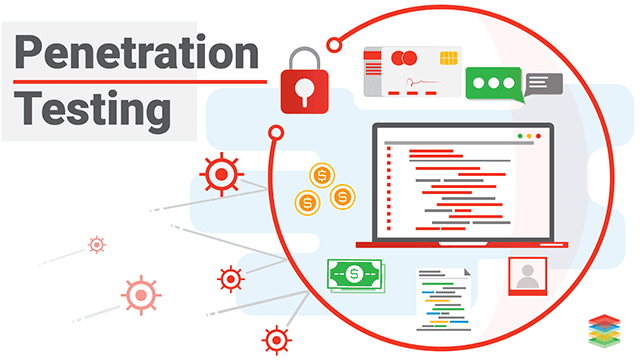
The Art of Pentesting: Hacking for Good in a World of Digital Shadows
In the ever-evolving landscape of cybersecurity, where threats lurk in the digital shadows and vulnerabilities hide in plain sight, there exists a unique breed of professionals who don the white hat and wield their skills for good. These are the penetration testers, or "pentesters," the modern-day digital detectives who hack systems not to exploit them, but to protect them. Welcome to the fascinating world of pentesting—a realm where curiosity meets code, and where every vulnerability uncovered is a step toward a safer digital future.
What is Pentesting, Anyway?
Penetration testing, or pentesting, is the practice of simulating cyberattacks on a system, network, or application to identify security weaknesses. Think of it as a controlled stress test for your digital infrastructure. The goal? To uncover vulnerabilities before the bad guys do. Pentesters use the same tools and techniques as malicious hackers, but with one crucial difference: they have permission. Their mission is to find and fix weaknesses, not exploit them.
The Pentester's Toolkit: More Than Just Fancy Gadgets
A pentester's toolkit is a blend of cutting-edge software, custom scripts, and good old-fashioned ingenuity. Tools like Metasploit, Nmap, Burp Suite, and Wireshark are staples in the pentester's arsenal. But it’s not just about the tools—it’s about how you use them. A skilled pentester knows that creativity and critical thinking are just as important as technical prowess.
For example, a pentester might use social engineering to trick an employee into revealing their password, or they might exploit a misconfigured server to gain unauthorized access. The possibilities are endless, and the best pentesters are those who can think like an attacker while maintaining the ethical boundaries of their role.
The Thrill of the Hunt: Why Pentesting is So Addictive
There’s something inherently thrilling about pentesting. It’s a constant game of cat and mouse, where the pentester is both the hunter and the hunted. Every engagement is a puzzle, a challenge to outsmart the system and uncover its secrets. And when you finally find that one vulnerability that could have been exploited by a real attacker, the rush is unparalleled.
But pentesting isn’t just about the thrill—it’s about the impact. Every vulnerability you uncover is a potential disaster averted. Whether it’s a misconfigured firewall, an unpatched software vulnerability, or a weak password policy, your work as a pentester can make a real difference in keeping people and organizations safe.
The Ethical Dilemma: Walking the Fine Line
Pentesting is not without its ethical challenges. After all, you’re essentially hacking into systems, even if it’s with permission. This raises important questions about privacy, consent, and the potential for unintended consequences. What if you accidentally disrupt a critical system during a test? What if you uncover sensitive information that wasn’t part of the scope? These are the kinds of dilemmas that pentesters must navigate every day.
That’s why ethical guidelines and clear communication are so important in pentesting. Before any engagement, pentesters work closely with their clients to define the scope of the test, establish rules of engagement, and ensure that everyone is on the same page. It’s a delicate balance, but one that is essential to maintaining trust and integrity in the field.
The Future of Pentesting: AI, Automation, and Beyond
As technology continues to advance, so too does the field of pentesting. Artificial intelligence and machine learning are increasingly being used to automate vulnerability scanning and analysis, allowing pentesters to focus on more complex and creative tasks. But while automation can certainly make the job easier, it’s no substitute for human intuition and expertise.
The rise of the Internet of Things (IoT) and cloud computing has also introduced new challenges for pentesters. With more devices and systems connected than ever before, the attack surface is constantly expanding. This means that pentesters must continually adapt and evolve, staying one step ahead of the attackers.
Conclusion: Hacking for a Better Tomorrow
Pentesting is more than just a job—it’s a mindset. It’s about curiosity, creativity, and a relentless drive to uncover the truth. It’s about using your skills for good, and making the digital world a safer place for everyone.
So the next time you hear about a major data breach or a devastating cyberattack, remember the pentesters—the unsung heroes who work tirelessly behind the scenes to prevent such disasters. They may not wear capes, but in the world of cybersecurity, they are the true superheroes.
And who knows? Maybe you’ll be inspired to pick up a white hat and join their ranks. After all, in a world where the only constant is change, the need for skilled pentesters has never been greater. The digital shadows are waiting—will you step into the light?